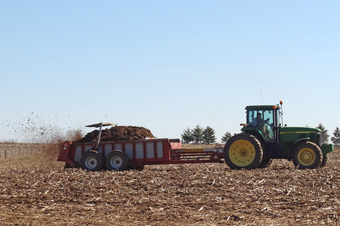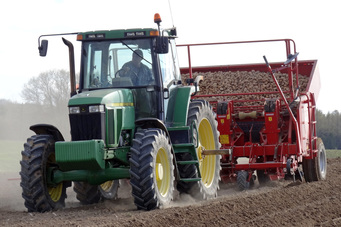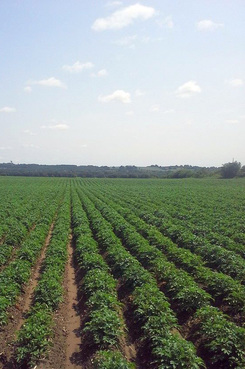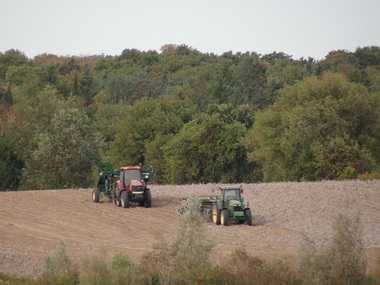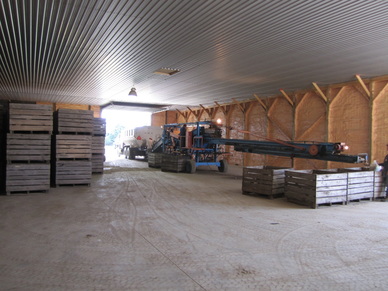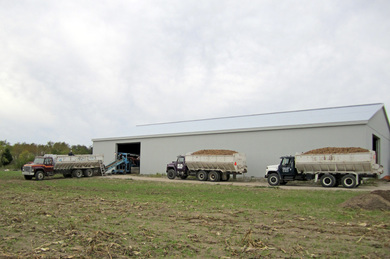From Seed Potato to Baked Potato
Growing potatoes is a summer long event. There is no quick turnover for multiple crops planted each season. Every winter we analyse our land and decide where to grow the potatoes. Crop rotation is an essential element of our sustainable farming practices. Crop rotation ensures soil nutrients are not depleted by growing the same crop year after year in the same field.
Planting the CropWhile the fields are being prepared, we are also receiving our shipments of seed potatoes. The shipments arrive by the tractor trailer load as the seed potatoes are quite bulky. Seed potatoes are special potatoes that we cut into smaller pieces. The seeds are loaded into the bin on our potato planter which plants 4 rows at a time. Potatoes are planted in little hills. It generally takes about three weeks to plant all the fields.
|
|
Storing the PotatoesOnce the potatoes have all been removed from the ground and moved into one of our storage buildings, we begin the process of monitoring the temperature and humidity of the buildings to keep optimal storage conditions. Over the course of the winter the potatoes are slowly removed from the storages, run through our grading line, bagged up and delivered to our customers.
|
© 2024 Thompson Potato Farm
.

